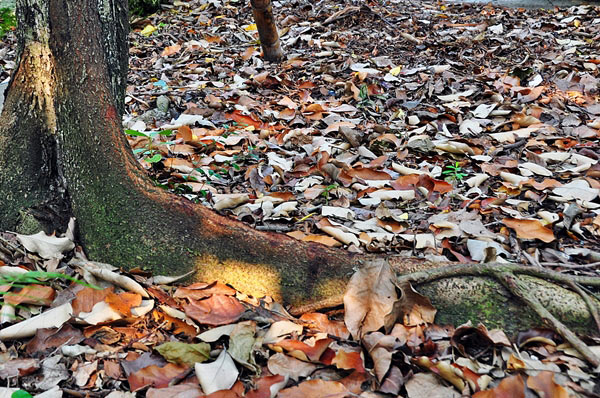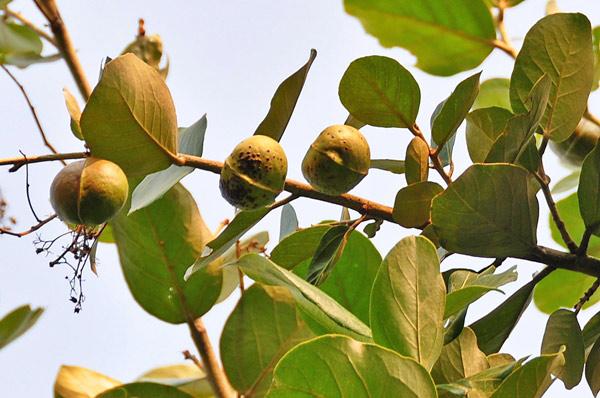Heritiera littoralis
The looking-glass mangrove is widely distributed in southeastern Asia, East Africa and Australia. In Taiwan, it has been recorded in the wild from Keelung in the north, Gongliao in New Taipei City, Yilan, Taitung, the Hengchun Peninsula, and the outlying islands of Orchid Island and Green Island, showing a discontinuous distribution in general.
The looking-glass mangrove is a representative plant of Taiwan's tropical coastal forests, possessing many characteristics that help it survive successfully in the shallow coastal environment. For example, its specially shaped fruit has a skin with raised ridges like the bottom of a boat, and the fruit contains many lightweight fibers, which allow it to float on water and expand its range of influence by drifting with the current to other places, making it a representative of tropical sea drift plants.
The Chinese name of the looking-glass mangrove comes from its silver-backed leaves. The color comes from the densely distributed silver-white scales. These scales and the brown scales scattered among them can reduce the evaporation of water from the leaves, so that it will not lose too much water in the coastal environment under strong sunlight. The scales also have an anti-salt function, so that the salt carried by the sea breeze will not come into direct contact with the surface of the leaves, thus minimizing the damage caused by salt to the plant.
The special appearance of the buttress roots is also one of the characteristics of the looking-glass mangrove. Its lateral roots protrude from the ground, grow upward and extend in all directions, like upright planks, which strengthen the supporting capacity of the tree and allow the tree to survive in places with a shallow soil layer. The huge buttress roots often become a special feature of tropical coastal forests.

